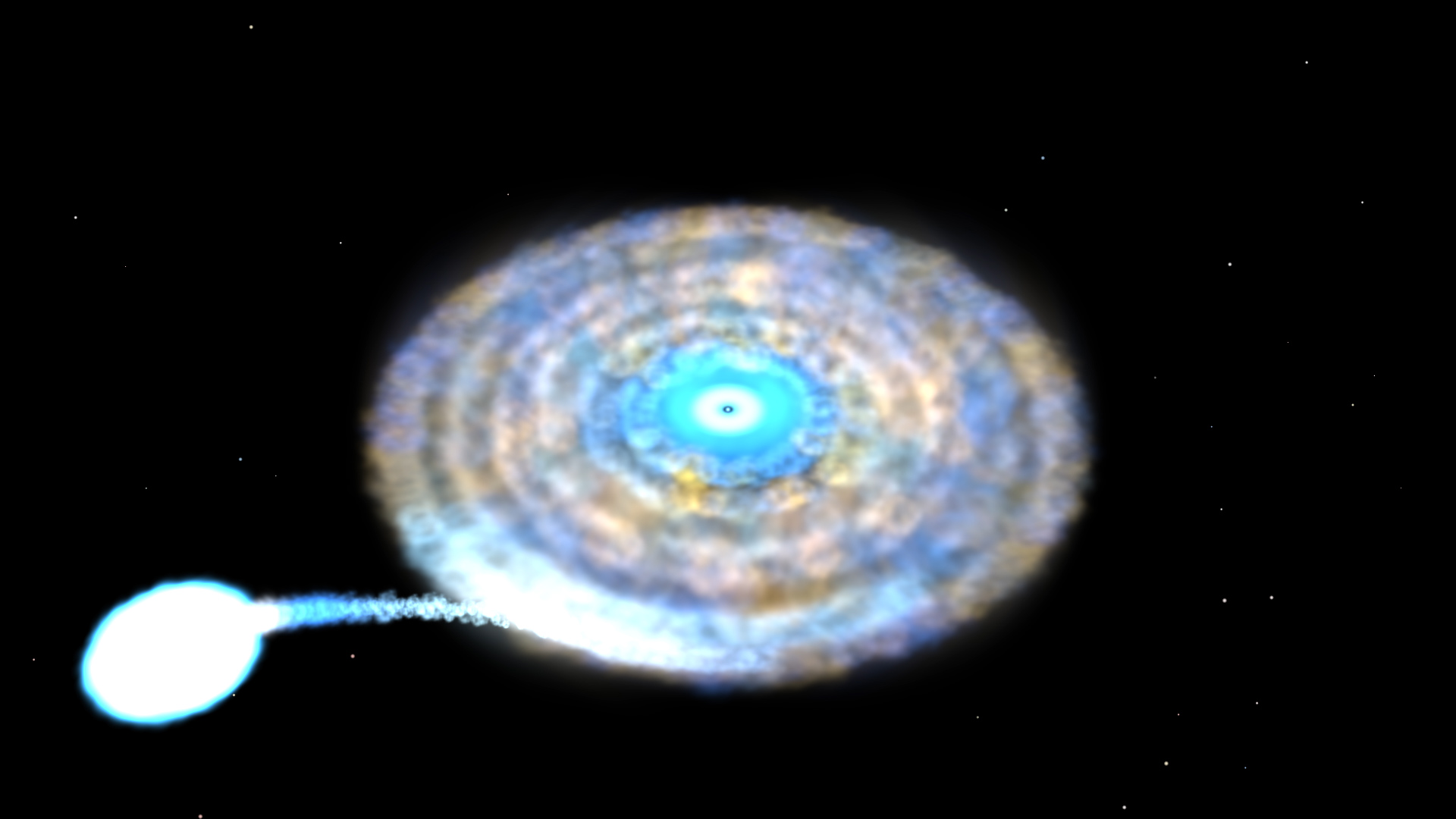This Newfound X-Ray Pulsar Is Orbiting Its Partner at Record Speed
A powerful X-ray pulsar is whipping around its stellar partner at a record-breaking speed.
According to new data from the Neutron star Interior Composition Explorer (NICER) system, which was installed aboard the International Space Station last June, these two stars revolve around each other once every 38 minutes — the fastest orbit ever observed in a pulsar binary system like this.
Of the two stars, one is an X-ray pulsar, which is a superdense neutron star that shoots out X-rays as it spins, researchers said in a new study describing the finding. Pulsars form when massive stars explode in a supernova blast, leaving behind a whirling stellar core. This particular pulsar is known as an accreting millisecond X-ray pulsar (AMXP). [Inside a Neutron Star (Infographic)]
The pulsar, called IGR J17062-6143 (J17062 for short), is closer to its partner star than Earth is to the moon. Because of how close the two are, and the brutal speeds at which they're traveling, "It's not possible for a hydrogen-rich star, like our sun, to be the pulsar's companion. You can't fit a star like that into an orbit so small," lead study author Tod Strohmayer, an astrophysicist at NASA's Goddard Space Flight Center in Maryland, said in a statement. This led the team to conclude that the second star is likely a hydrogen-poor white dwarf — white dwarf stars are small, dense stars, often the size of Earth, that are formed when low-mass stars go through gravitational collapse.

The discovery of this system was supported by earlier observations made by the Rossi X-ray Timing Explorer in 2008. Because NICER has been able to make observations for longer periods of time, the team can now confirm the record speed of this unique pulsar binary system.
As the two stars revolve around each other, over time material from the white dwarf donor star will build up on the pulsar. If the pressure of this buildup increases to the point where its atoms fuse, J17062 could explode with the energy equivalent to 100 15-megaton bombs detonating over every square centimeter, Strohmayer explained in the statement. But the pulsar has not yet reached such a point.
These findings, however, do more than prove the existence of such a fast-orbiting binary system. Neutron stars like J17062 "turn out to be truly unique nuclear physics laboratories, from a terrestrial standpoint," Zaven Arzoumanian, an astrophysicist at NASA Goddard and lead scientist for NICER, said in the statement. "We can't recreate the conditions on neutron stars anywhere within our solar system."
Get the Space.com Newsletter
Breaking space news, the latest updates on rocket launches, skywatching events and more!
By studying neutron stars like J17062, scientists can examine elements of subatomic physics in ways that simply aren't possible in human-made laboratories, Arzoumanian said. So, with the discovery of a neutron star in such a unique system, scientists will have the opportunity to better understand these stars and how they behave.
The work was detailed May 9 in The Astrophysical Letters.
Email Chelsea Gohd at cgohd@space.com or follow her @chelsea_gohd. Follow us @Spacedotcom, Facebook and Google+. Original article on Space.com.
Join our Space Forums to keep talking space on the latest missions, night sky and more! And if you have a news tip, correction or comment, let us know at: community@space.com.

Chelsea “Foxanne” Gohd joined Space.com in 2018 and is now a Senior Writer, writing about everything from climate change to planetary science and human spaceflight in both articles and on-camera in videos. With a degree in Public Health and biological sciences, Chelsea has written and worked for institutions including the American Museum of Natural History, Scientific American, Discover Magazine Blog, Astronomy Magazine and Live Science. When not writing, editing or filming something space-y, Chelsea "Foxanne" Gohd is writing music and performing as Foxanne, even launching a song to space in 2021 with Inspiration4. You can follow her on Twitter @chelsea_gohd and @foxannemusic.









